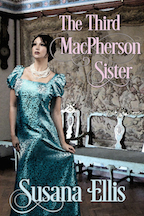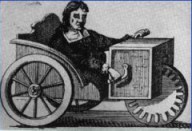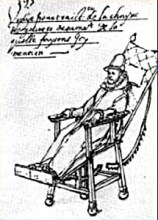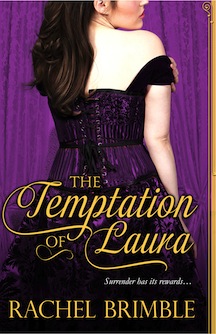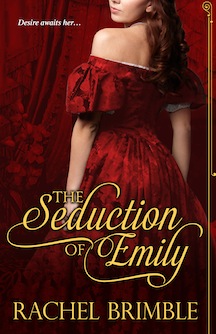The Master of Ceremonies announces a great ball to be held on Valentine’s Day in the Upper Assembly Rooms of Bath. Ladies of the highest rank—and some who wish they were—scheme, prepare, and compete to make best use of the opportunity. Dukes, earls, tradesmen, and the occasional charlatan are alert to the possibilities as the event draws nigh.
But anything can happen in the magic of music and candlelight as couples dance, flirt, and open themselves to romantic possibilities. Problems and conflict may just fade away at a Valentine’s Day Ball.
25% of proceeds benefit the Malala Fund.
Beauty and the Bounder
by Jessica Cale
He’s a liar and a fortune-hunter… and exactly what she needs.
The moment Lady Emilia sets eyes on the Chevalier d’Aubusson, she knows their fates are tied together. For good or ill, she cannot say. A mysterious aristocrat with a tragic past, the chevalier makes waves with his considerable charm.
But the chevalier is not as he seems. There are cracks in his story, and Emilia never could resist a mystery. Whether he’s a gentleman or a bounder, he might just be the man for her.
The Earl Takes a Wife
by Sherry Ewing
It began with a memory, etched in the heart.
Lady Celia Lacey is too young for a husband, especially man-about-town Lord Adrian de Courtenay. But when she meets him at a house party, she falls in love.
Adrian finds the appealing innocent impossible to forget, though she is barely out of the schoolroom and a relative by marriage.
His sister’s deceptions bring them together, but destroys their happiness. Can they reach past the hurt to the love that still burns?
The Beast Next Door
by Jude Knight
In all the assemblies and parties, no-one Charis met could ever match the beast next door.
Charis Fishingham has always felt more at home at Eastwood—Beastwood, as the neighbours called it, after the flawed child who once lived there. In the Eastwood gardens, Charis can escape her mother’s expectations, her sisters’ chatter, and her own worries about her future. There, she reads and remembers her secret friend, long gone into exile to have his birthmarks removed at his family’s command.
Now the Beast has returned. Eric Lord Wayford would rather face the surgeons of Naples and Napoleon’s armies than the tongues of the ton. He joyfully greets Charis, and their future looks to be full of hope.
But someone does not wish Charis to wed the Beast of Beastwood, and will stop at nothing to keep them apart.
The Umbrella Chronicles: John and Emma’s Story
by Amy Quinton
A serious-minded, scientific man of learning seeks a complex and chaotic practitioner of all things superstitious who will upend his well-ordered life.
The Umbrella Strikes Again! Another Bachelor Has Fallen!
England, 1815
Dr. John Edward Hartwell needs assistance, though not quite the kind of help he might think. True, he is well-organized, tidy, and pathologically set in his ways—a more serious-minded man one might never find.
But in his ways, I have determined, lies misery.
Enter Miss Emma Merryweather—a woman who is as lovely as she is chaotic. She is the perfect candidate to compliment our man of numbers and logical focus, bringing sunshine and superstition to redirect him away from a future of certain wretchedness.
And now that she has been categorically convinced that they are destined to be together—the signs, you see—no one can stand in her way, for she is as tenacious and optimistic as she is beautiful.
And none can resist her smile.
If I have anything to say about matters, and I always have something to say about matters, the signs will point the way.
They already have.
Lady Harriett Ross,
Self-proclaimed Motley Meddler * Mistress of Destiny * Wielder of the Infamous Umbrella
I’m just an old woman with opinions. On everything.
Candles in the Dark
by Caroline Warfield
Doug Marsh and his candles bring light to many, none more than Esther. They may light the Assembly Rooms even as his love lights her life.
Doug Marsh knew what the army expected of him. Invalided out, he struggles to run his uncle’s candle-works and look after those dependent on it. A contract with the Bath Assembly Rooms would go a long way toward succeeding at both of those things. The plight of a young woman is a distraction he doesn’t need.
Esther Hopkins, formerly ‘the Honorable’, has no time to mourn the life denied her by a single mistake. A woman alone with a new-born son to raise needs work, and she is determined to make it on her own. If only she could stop yearning for the sturdy arms and kind blue eyes of the man who rescued her from starvation and enlisted the entire Marsh Candle Works to her support. But Sergeant Marsh shows nothing but benevolent interest in her welfare. Why should he care for a fallen woman?
In the normal course of things Esther is far above Doug’s touch. Can he find the courage to court her and still take care of business at the same time?
Amazon • Barnes & Noble • Kobo • iBooks • Smashwords
About the Bluestocking Belles
The Bluestocking Belles (the “BellesInBlue”) are ten very different writers united by a love of history and a history of writing about love. From sweet to steamy, from light-hearted fun to dark tortured tales full of angst, from London ballrooms to country cottages to the sultan’s seraglio, one or more of us will have a tale to suit your tastes and mood.
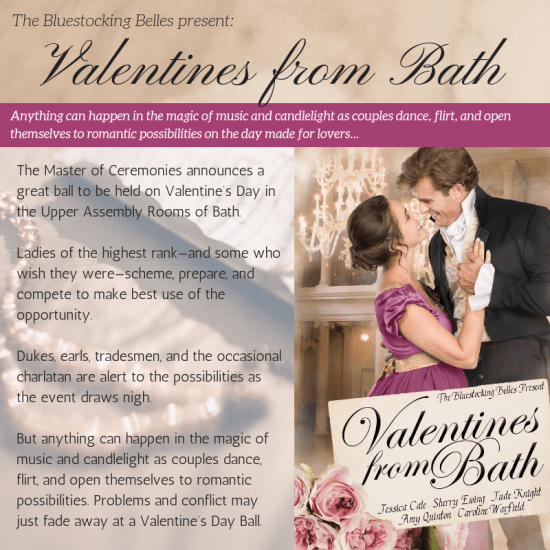

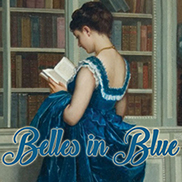















![Shops on the Pulteney Bridge By Erebus555 at English Wikipedia [CC BY-SA 3.0 (http://creativecommons.org/licenses/by-sa/3.0) or GFDL (http://www.gnu.org/copyleft/fdl.html)], via Wikimedia Commons](https://susanaellisauthor.blog/wp-content/uploads/2015/06/shops_on_pulteney_bridge.jpg?w=714&h=474)
![Sydney Gardens By Plumbum64 (Own work) [CC BY-SA 3.0 (http://creativecommons.org/licenses/by-sa/3.0)], via Wikimedia Commons](https://susanaellisauthor.blog/wp-content/uploads/2015/06/a_footbridge_over_the_kennet_and_avon_canal_in_sydney_gardens_bath_dated_1800_designed_by_john_rennie_kennet_and_avon_canal.jpg?w=714&h=506)

![Theatre Royal, Bath By MichaelMaggs (Own work) [CC BY-SA 2.5 (http://creativecommons.org/licenses/by-sa/2.5)], via Wikimedia Commons](https://susanaellisauthor.blog/wp-content/uploads/2015/06/theatre_royal_bath.jpg?w=714&h=658)
